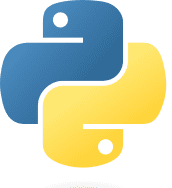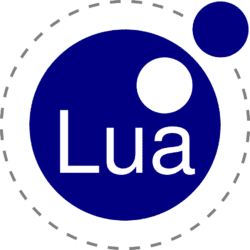Top 10 Metaverse Development Languages Amid Web3 Developers

The Metaverse and Web3 are two interconnected concepts that represent the next stage of the internet’s evolution. While the precise definitions of these terms can vary, they both revolve around the idea of creating immersive and interactive online experiences that go beyond the traditional boundaries of the internet.
The Metaverse refers to a collective virtual shared space where users can interact with a computer-generated environment and other users in real-time. It is often described as a convergence of the physical and digital worlds, where people can seamlessly move between the two. The concept of the Metaverse draws inspiration from science fiction, particularly from novels like “Snow Crash” and movies like “The Matrix.”
Key characteristics of the Metaverse include:
a. Immersive Experience: The Metaverse aims to provide a highly immersive experience through technologies like virtual reality (VR), augmented reality (AR), and mixed reality (MR). Users can engage with the virtual environment using their senses, such as sight, hearing, and touch, to create a more realistic and interactive experience.
b. Persistent World: Unlike traditional online experiences, the Metaverse is expected to have a persistent world, meaning it continues to exist and evolve even when users log off. It is a dynamic and ever-changing environment shaped by user interactions and contributions.
c. Social Interaction: Interacting with other users is a core aspect of the Metaverse. It fosters social connections, collaboration, and shared experiences. Users can communicate, work, play, and engage in various activities together within the virtual space.
d. User-Generated Content: The Metaverse encourages user-generated content creation, enabling users to contribute to the development and evolution of the virtual world. Users can design and build virtual objects, environments, and experiences, making the Metaverse a collaborative platform.
e. Interoperability: The Metaverse is envisioned as an interconnected network of virtual worlds, platforms, and applications. It aims to overcome the current fragmentation of the internet by enabling seamless movement and interaction across different Metaverse platforms.
Web3:
Web3, also known as the decentralized web, refers to the next generation of the internet that leverages blockchain technology and decentralized protocols. It aims to address some of the limitations and issues associated with the current web infrastructure (Web2), including centralization, data privacy concerns, and lack of user control.
Key aspects of Web3 include:
a. Decentralization: Web3 platforms utilize decentralized technologies like blockchain to remove the need for intermediaries and central authorities. It enables peer-to-peer interactions, secure transactions, and transparent governance without relying on a single entity.
b. Data Ownership and Privacy: Web3 emphasizes user ownership and control over personal data. With cryptographic principles, users can maintain ownership of their data and choose how and when to share it. This approach enhances privacy and reduces the risk of data breaches and unauthorized access.
c. Smart Contracts: Web3 platforms often employ smart contracts, which are self-executing contracts with predefined rules and conditions encoded on the blockchain. Smart contracts enable automation, trustless interactions, and the creation of decentralized applications (DApps) that can operate autonomously.
d. Tokenization: Web3 embraces the concept of tokenization, where digital assets or tokens can represent ownership rights, access to services, or even real-world assets. These tokens can be traded, exchanged, and used within the Web3 ecosystem, providing new economic models and incentives.
e. Interoperability: Web3 envisions interoperability between different blockchain networks and protocols, enabling seamless interaction and transfer of assets and data across various platforms. This interoperability is crucial for the development of the Metaverse, as it allows the exchange of virtual assets and identities across different virtual worlds.
4/10 💻 A deep dive into the programming languages fueling creativity among web3 developers in the metaverse pic.twitter.com/87vPHYxEbR
— Blanka.eth (@Blankaeth) June 16, 2023
Importance of Metaverse and Web3 for the economy
The Metaverse and Web3 have significant implications for the economy, offering new opportunities and transforming various sectors. Here are some of the key ways in which they can impact the economy:
1. New Economic Models: The Metaverse and Web3 facilitate the creation of new economic models based on digital assets, virtual currencies, and decentralized platforms. With the Metaverse, users can buy, sell, and trade virtual goods and services, leading to the emergence of virtual economies. This opens up opportunities for businesses and individuals to generate revenue through virtual property, virtual fashion, digital art, gaming, virtual events, and more. Web3’s tokenization capabilities enable the creation of new financial instruments, crowdfunding mechanisms, and decentralized autonomous organizations (DAOs), revolutionizing fundraising, investing, and governance structures.
2. Job Creation and Skills Demand: The development and operation of the Metaverse and Web3 ecosystems require a diverse set of skills and expertise. This creates job opportunities in various domains, including virtual world design, blockchain development, 3D modeling, virtual reality content creation, digital asset management, cybersecurity, smart contract development, and more. As the adoption of these technologies grows, there will be an increased demand for professionals with specialized skills, leading to job creation and economic growth.
3. Virtual Commerce and Marketplaces: The Metaverse and Web3 enable virtual commerce by providing platforms for buying and selling virtual goods, services, and digital assets. Virtual marketplaces within the Metaverse can host transactions for virtual real estate, virtual fashion, virtual collectibles, virtual experiences, and more. These marketplaces offer opportunities for businesses to expand their customer base and revenue streams beyond the physical world. Web3’s decentralized nature ensures secure and transparent transactions, reduces fees, and enables peer-to-peer commerce without intermediaries, enhancing trust and efficiency in virtual transactions.
4. Democratization of Access: The Metaverse and Web3 have the potential to democratize access to opportunities, resources, and markets. In the Metaverse, users can participate and contribute irrespective of their geographical location, bridging the gap between regions and demographics. Web3’s decentralized nature removes barriers to entry, allowing individuals from different parts of the world to access financial services, invest in digital assets, and participate in decentralized governance structures. This inclusivity can empower individuals and communities, leading to economic empowerment and reducing inequalities.
5. Innovation and Collaboration: The Metaverse and Web3 foster innovation and collaboration by providing platforms for developers, creators, and entrepreneurs to build and experiment with new ideas. The Metaverse’s user-generated content capabilities allow individuals and businesses to create unique experiences, virtual worlds, and applications, driving innovation in entertainment, education, healthcare, design, and more. Web3’s decentralized platforms encourage collaboration among developers, enabling the creation of interoperable applications, shared standards, and collective problem-solving. This collaborative environment accelerates innovation and drives economic growth.
6. Data Ownership and Monetization: Web3’s emphasis on user data ownership and privacy allows individuals to have control over their personal information. Users can choose to monetize their data by participating in data marketplaces, where they can sell their data directly to businesses in a secure and transparent manner. This shift in data ownership and monetization models has the potential to reshape the advertising and marketing industries, providing fair compensation to users for their data while enabling businesses to access valuable insights.
It’s important to note that the full economic impact of the Metaverse and Web3 is still evolving, and their potential is subject to further development, adoption, and regulatory considerations. However, these concepts hold significant promise for shaping the future economy and creating new opportunities for businesses, individuals, and communities.
Also read: Top 4 Major Difference Between Web3 and Metaverse
Top 10 Metaverse Development Languages Amid Web3 Developers
The metaverse is a hot topic in the tech world, and with the rise of Web3, it’s no surprise that developers are looking for the best languages to build in. Here are the top 10 metaverse development languages:
- C#
- C# is a powerful and versatile language that is well-suited for a variety of tasks, including metaverse development. It is used by Microsoft for its .NET framework, and it is also supported by a wide range of other platforms.

- Solidity
- Solidity is a purpose-built language for developing smart contracts on the Ethereum blockchain. It is relatively easy to learn, and it has a large and active community of developers.
- Rust
- Rust is a modern language that is known for its speed, safety, and concurrency. It is a good choice for developing high-performance metaverse applications.

- Python
- Python is a popular general-purpose language that is known for its simplicity and ease of use. It is a good choice for developers who are new to metaverse development.

- C++
- C++ is a powerful language that is well-suited for performance-critical applications. It is a good choice for developers who need to create high-end metaverse experiences.

- JavaScript
- JavaScript is a versatile language that is used for both front-end and back-end development. It is a good choice for developers who want to create metaverse applications that can be accessed from a variety of devices.

- Lua
- Lua is a lightweight language that is often used for game development. It is a good choice for developers who want to create immersive and interactive metaverse experiences.

- WebAssembly
- WebAssembly is a new language that is designed to run on the web. It is a good choice for developers who want to create metaverse applications that can be accessed from any device with a web browser.

- Go
- Go is a modern language that is known for its simplicity and performance. It is a good choice for developers who want to create scalable and reliable metaverse applications.

- Kotlin
- Kotlin is a relatively new language that is gaining popularity in the tech world. It is a good choice for developers who want to create metaverse applications that are safe, secure, and efficient.

These are just a few of the many languages that can be used for metaverse development. The best language for you will depend on your specific needs and requirements.
Here are some additional tips for choosing a metaverse development language:
- Consider the type of metaverse application you want to create. Some languages are better suited for certain types of applications than others.
- Consider your level of experience. Some languages are easier to learn than others.
- Consider the community. Some languages have larger and more active communities than others.
- Consider the future. Some languages are more likely to be adopted by the metaverse community than others.
With so many great languages to choose from, you’re sure to find the perfect one for your metaverse development project.
Benefits of Metaverse and Web3
The Metaverse and Web3 offer a range of benefits that have the potential to transform the way we interact, work, and live online. Here are some key benefits of the Metaverse and Web3:
1. Enhanced User Experience: The Metaverse aims to provide highly immersive and interactive experiences, leveraging technologies like virtual reality (VR), augmented reality (AR), and mixed reality (MR). Users can engage with the virtual environment using their senses, creating a more realistic and engaging experience. This enhanced user experience opens up new possibilities for entertainment, education, training, and remote collaboration.
2. Digital Ownership and Control: Web3 and the Metaverse emphasize the concept of digital ownership and user control. In the Metaverse, users can own and trade virtual assets, digital fashion items, virtual real estate, and more. Web3’s decentralized nature enables users to have ownership and control over their data, identities, and digital assets, reducing reliance on centralized entities. This empowers individuals, provides greater privacy, and allows users to monetize their digital creations.
3. Economic Opportunities: The Metaverse and Web3 create new economic opportunities. The Metaverse allows users to generate revenue through virtual economies, such as virtual property sales, digital art, gaming, and virtual experiences. Web3 enables decentralized finance (DeFi), where users can participate in financial activities like lending, borrowing, and investing without intermediaries. Tokenization within Web3 allows for fractional ownership of assets, enabling broader access to investment opportunities.
4. Interoperability and Seamless Connectivity: Both the Metaverse and Web3 emphasize interoperability, enabling seamless connectivity and interaction between different platforms, applications, and virtual worlds. This connectivity allows users to move their digital identities, assets, and data across different Metaverse platforms, fostering a more connected and fluid experience. Interoperability also promotes collaboration, shared standards, and innovation across different projects and communities.
5. Trust and Transparency: Web3’s decentralized nature, supported by blockchain technology, enhances trust and transparency. Smart contracts, which are self-executing contracts with predefined rules, ensure transparency and reduce the need for intermediaries. Blockchain-based verification and immutability enhance security and prevent fraud. In the Metaverse, blockchain-based ownership records provide verifiable proof of ownership for digital assets, preventing counterfeit items and fostering trust among users.
6. Democratization of Opportunities: The Metaverse and Web3 have the potential to democratize access to opportunities and resources. With the Metaverse, users can participate and contribute regardless of their physical location, reducing geographical barriers. Web3’s decentralized platforms provide financial services and access to markets for individuals who are unbanked or underbanked. This inclusivity allows for broader participation in the digital economy, empowering individuals and communities.
7. Innovation and Collaboration: The Metaverse and Web3 foster innovation and collaboration. The Metaverse encourages user-generated content, enabling individuals and businesses to create and share their virtual worlds, experiences, and applications. Web3’s open-source and collaborative nature allows developers to build on existing platforms, share knowledge, and create interoperable applications. This collaborative environment spurs innovation, drives creativity, and accelerates technological advancements.
8. Privacy and Data Security: Web3 addresses privacy concerns by enabling users to have control over their personal data. Instead of centralized entities storing and controlling user data, Web3 protocols enable users to choose how and when to share their data while maintaining ownership. This shift in data ownership and control enhances privacy and reduces the risk of data breaches and unauthorized access.
It’s important to note that realizing these benefits requires responsible development, addressing ethical considerations, and ensuring inclusivity. Additionally, challenges such as scalability, governance, and regulatory frameworks need to be addressed to fully harness the potential of the Metaverse and Web3.
Also read: 4 Major Benefits And 3 Cons Of Metaverse In Web3
Risks associated with Metaverse and Web3
While the Metaverse and Web3 offer numerous benefits, they also come with certain risks and challenges. It’s essential to understand and address these risks to ensure the responsible development and adoption of these technologies. Here are some key risks associated with the Metaverse and Web3:
1. Privacy and Data Security: The Metaverse and Web3 raise concerns about privacy and data security. In the Metaverse, users generate vast amounts of data through their interactions, movements, and transactions. Storing and managing this data securely and ensuring users’ privacy can be challenging. Web3’s decentralized nature, while offering advantages, also requires users to be vigilant about securing their private keys and digital wallets. Furthermore, as virtual worlds become more interconnected, there is a risk of data breaches and unauthorized access if robust security measures are not in place.
2. Fraud and Scams: The Metaverse and Web3 create opportunities for fraudulent activities and scams. As virtual economies and digital asset trading flourish, there is a risk of counterfeit items, fake marketplaces, and fraudulent transactions. Users may encounter malicious actors who deceive them into purchasing non-existent or low-quality virtual assets. Web3’s decentralized nature can make it challenging to identify and address fraudulent activities, necessitating the development of robust security measures, reputation systems, and user education.
3. Financial Risks: Web3 introduces new financial models and instruments, such as decentralized finance (DeFi) and non-fungible tokens (NFTs). While these innovations offer exciting opportunities, they also come with financial risks. DeFi platforms can be subject to smart contract vulnerabilities, hacks, or code exploits that may result in significant financial losses for users. The volatility and speculative nature of some digital assets, such as cryptocurrencies and NFTs, pose risks of financial bubbles and market manipulations, potentially leading to financial instability if not regulated appropriately.
4. Inequality and Exclusion: Without careful consideration, the Metaverse and Web3 have the potential to exacerbate existing inequalities and create new forms of exclusion. Economic barriers, such as the cost of hardware, internet access, and virtual assets, may prevent certain individuals or communities from participating fully in the Metaverse or accessing Web3 services. In addition, disparities in digital literacy, technical skills, and access to resources can result in unequal opportunities and advantages for individuals and regions, further widening the digital divide.
5. Ethical Considerations: The Metaverse and Web3 raise ethical concerns that need to be carefully addressed. Virtual environments may present opportunities for unethical or harmful behaviors, such as virtual harassment, exploitation, or the creation and distribution of inappropriate or offensive content. Ensuring appropriate guidelines, moderation mechanisms, and ethical frameworks within the Metaverse and Web3 platforms is crucial to mitigate these risks and create a safe and inclusive environment.
6. Regulatory and Legal Challenges: The regulatory landscape surrounding the Metaverse and Web3 is still evolving, and there are complexities in applying existing regulations to these emerging technologies. Issues such as jurisdiction, taxation, intellectual property rights, virtual asset ownership, and consumer protection require thoughtful consideration and clear legal frameworks. Striking a balance between fostering innovation and protecting users’ rights and interests is crucial for the responsible development and adoption of the Metaverse and Web3.
7. Health and Addiction Risks: The immersive nature of the Metaverse, especially when coupled with virtual reality (VR) technologies, raises concerns about potential health risks and addiction. Extended periods of time spent in virtual environments can have physical and psychological effects on users, including eye strain, motion sickness, and social isolation. Balancing the benefits of immersion with the need for user well-being and setting healthy usage guidelines becomes vital.
To mitigate these risks, it is important for stakeholders, including developers, platform operators, regulators, and users, to collaborate and establish best practices, standards, and guidelines that prioritize privacy, security, inclusivity, ethical considerations, and user well-being. Responsible innovation and proactive risk management are essential to ensure the Metaverse and Web3 technologies can reach their full potential while mitigating potential harms.
Future of Metaverse and Web3 Developers
The future of Metaverse and Web3 developers is promising, as these technologies continue to gain traction and shape the digital landscape. Developers play a critical role in building the infrastructure, applications, and experiences that make the Metaverse and Web3 a reality. Here’s an overview of the future outlook for Metaverse and Web3 developers:
1. Increased Demand for Skill Sets: As the Metaverse and Web3 ecosystems evolve, there will be a growing demand for developers with specialized skill sets. Metaverse developers will need expertise in virtual world design, 3D modeling, animation, physics simulations, and user experience (UX) design. Web3 developers will require proficiency in blockchain development, smart contract programming, decentralized application (DApp) development, tokenization, and cryptography. The demand for these skill sets will continue to rise as more businesses and organizations adopt these technologies.
2. Collaboration and Interdisciplinary Work: The development of the Metaverse and Web3 will require collaboration and interdisciplinary work among developers, designers, artists, economists, and domain experts. Building immersive and interactive virtual environments requires a multidisciplinary approach, combining technical expertise with creative and user-centered design principles. Developers will collaborate with artists to create visually stunning virtual worlds, economists to design virtual economies, and UX designers to ensure seamless and engaging user experiences.
3. Innovation in Virtual Experiences: Metaverse developers will drive innovation in creating virtual experiences that go beyond gaming. Virtual conferences, virtual classrooms, virtual shopping experiences, virtual tourism, and virtual social platforms are just a few examples of the diverse applications of the Metaverse. Developers will explore new ways to leverage virtual reality (VR), augmented reality (AR), and mixed reality (MR) technologies to deliver immersive and transformative experiences across various industries and sectors.
4. Open-Source Development and Collaboration: Open-source development will play a significant role in the future of the Metaverse and Web3. Developers will contribute to open-source projects, collaborate on shared standards and protocols, and leverage existing frameworks and tools to accelerate development. Open-source communities will foster innovation, knowledge sharing, and collective problem-solving, enabling developers to build upon each other’s work and create interoperable solutions.
5. Decentralized Governance and DAOs: Web3 developers will participate in the development and governance of decentralized autonomous organizations (DAOs) and other decentralized governance structures. DAOs operate based on smart contracts and allow community members to collectively make decisions, manage resources, and govern platforms and applications. Developers will play a crucial role in designing and implementing the smart contracts and protocols that enable transparent, decentralized decision-making.
6. Security and Privacy Focus: Developers will continue to prioritize security and privacy in the Metaverse and Web3. They will contribute to the development of secure coding practices, conduct rigorous testing, and implement encryption and authentication mechanisms to safeguard user data and digital assets. Given the decentralized nature of Web3, developers will need to address security vulnerabilities specific to blockchain technology and design robust security measures that protect users’ privacy.
7. Education and Skill Development: The rapid growth of the Metaverse and Web3 will drive the need for educational resources and skill development programs. Developers will contribute to the creation of learning materials, online courses, workshops, and hackathons to empower aspiring developers and foster the growth of a skilled workforce. They will actively engage in knowledge sharing and mentorship, ensuring that the next generation of developers is well-equipped to embrace the challenges and opportunities presented by the Metaverse and Web3.
In summary, the future of Metaverse and Web3 developers is characterized by increased demand for specialized skill sets, collaboration across disciplines, innovation in virtual experiences, open-source development, decentralized governance participation, focus on security and privacy, and active engagement in education and skill development. Developers will be at the forefront of shaping the future digital landscape, enabling transformative experiences and driving the adoption of these emerging technologies.



























































